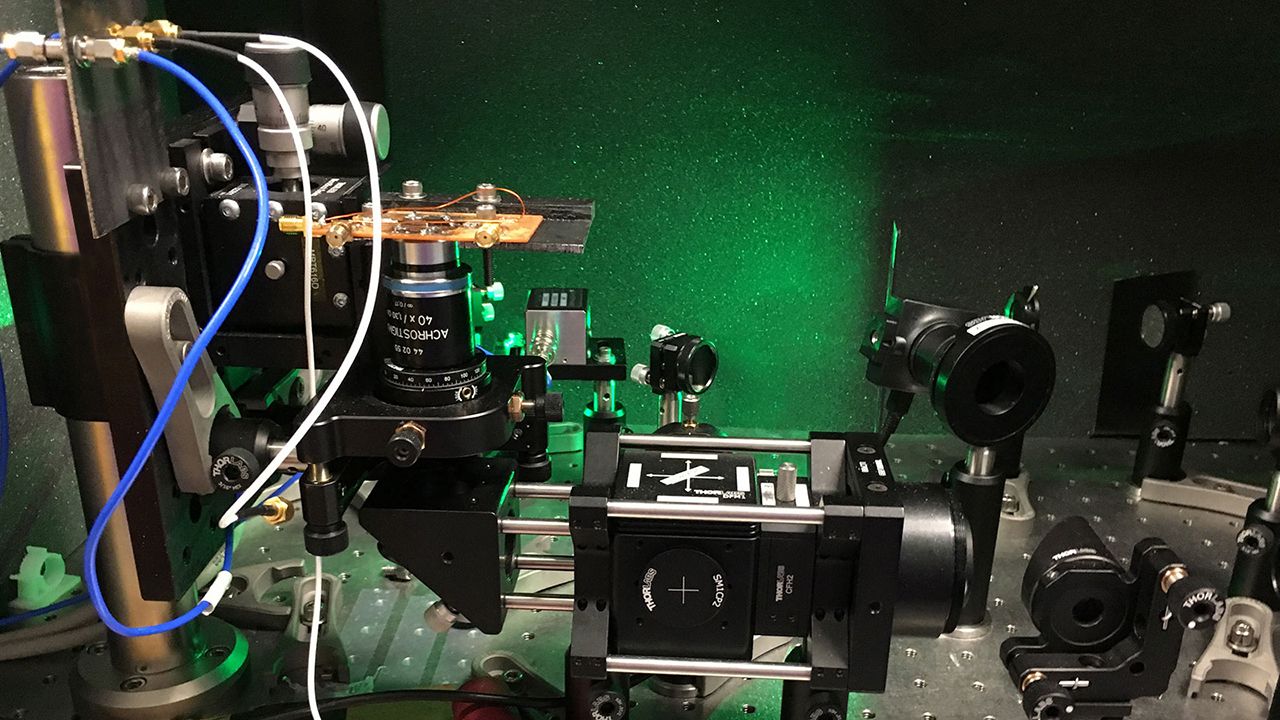Prof. Acosta Receives Prestigious NSF CAREER Award
May 4, 2020 - Leanne Yanabu

He will also develop a one-week summer or winter school for undergraduates based on the fascinating new area of quantum engineering, with an emphasis on women, minorities, and first-generation students.
Here is a detailed description of the proposal:
With support from the Chemical Measurement and Imaging Program in the Division of Chemistry, and co-funding from the Established Program to Stimulate Competitive Research (EPSCoR) and the Division of Chemical, Bioengineering, Environmental, and Transport Systems (CBET), Victor Acosta and his group are developing new measurement tools called “quantum sensors” to identify the molecular composition of samples with spatial resolution compatible with analysis of single cells. A quantum sensor uses a qubit (the logical element of a quantum computer) to detect its local environment.
Specifically, Acosta’s lab uses defects in diamond, called Nitrogen-Vacancy centers, as the qubit sensors. The group is using these sensors to generate and detect nuclear magnetization for nuclear magnetic resonance (NMR) spectroscopy. They seek to develop two different implementations of diamond NMR hardware:
- A microfluidic platform suitable for parallel chemical analysis of picoliter analyte volumes and
- A hyperspectral NMR microscope for quantifying metabolic composition with single cell resolution
The research is based on the hypothesis that a non-inductive detection modality (diamond quantum sensors) can lead to improvements in sensitivity, spectral resolution, spatial resolution, and microfluidic integration beyond what is currently available in small-volume NMR spectroscopy.
For the educational component of the grant, Acosta is integrating diamond NMR into undergraduate teaching labs and assessing the learning outcomes. He is also designing a curriculum for a one-week summer or winter school in quantum information and sensing that will target undergraduates, with an emphasis on women, under-represented minorities, and first-generation college students. His aim is to attract a diverse student body into the physical sciences and specifically to quantum sensing.
